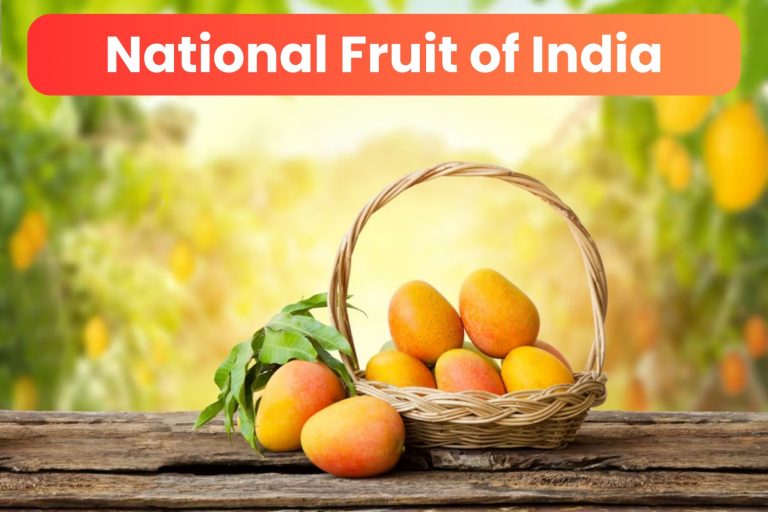India is a glorious country. It is a nation of endemic flora and fauna. There are several varieties of plants, fruits, and vegetables in India. They are exported throughout the globe. One such commodity, which has thrust India to the world stage is mango. Mango is the national fruit of India. It is a requisite in many religious and spiritual rituals.
The craze for mangoes is unparalleled. Delhi’s annual International Mango Festival is a testament to this fact. Despite India being the largest producer of mangoes, only 1% of the produce is exported. Indians consume a large portion of the produce.
Etymology: Origin of Word Mango
Mango is known as the ‘Food of the Gods’. The scientific name of the Indian mango is ‘Mangifera Indica’. The word Mangifera is derived from the Sanskrit word, ‘manjiri’. It literally means ‘cluster of flowers’. The word Indica means India. Mangoes and cashew nuts belong to the same family.
History of Mangoes
Mangoes have been an inspiration to poets since medieval times. The famous poet Kalidasa has detailed the virtues of the mango trees. It has been said that the Mughal emperor Akbar was a gregarious admirer of mangoes. He even planted one lakh mango trees over Lakhi Bagh in Darbhanga, Bihar during his reign.
Fossils have suggested the first appearance of mangoes to be 25-30 million years ago. It is quite prominent in the Vedic and Buddhist literature. Mango was officially adopted as the National Fruit of India in 1950.
Taste and Varieties of Mango
Each species of mango has a distinct texture, aroma, and taste. Their color varies according to their varieties and can range from orange, yellow, green, and red hues. They are consumed both ripe and raw. Raw mangoes are tangy and a little sour, which makes them a popular choice for pickles. Ripe mango flesh is sweet, although some may be slightly sour depending on the variety.
The fruit has one inedible seed. The seed is used to grow new mango plants and also has medicinal properties. The fat from the seed has a high stearic acid content. Thus, it is used to make soap.
At present, there are 1500 varieties in India but only 1000 are commercially cultivated. A few of the most famous varieties of the fruit are listed below.
| Alampur | Imam Pasand | Mulgoba |
| Alphonso/Hapus | Keitt | Nauk |
| Amrapali | Kesar | Neelum |
| Badami | Kishen Bhog | Pairi |
| Banganapalli | Konkan Raja | Palmer |
| Bombay | Lakshmanbhog | Philihara |
| Chaunsa | Lalbagh | Rajapuri |
| Dasheri | Langra | Raspuri |
| Gulaab Khaas | Malda/Fazli | Suvernarekha |
| Himsagar | Mallika | Totapuri/Sanders |
Benefits of Mangoes
Mangoes are packed with myriad essential antioxidants (astragalin, gallic acid, & quercetin), vitamins (A, C, & D), and minerals (magnesium & potassium). Naturally, they have humungous health benefits. They have been mentioned below.
- They support the immunity and strengthen the eyes, heart, skin, and hair.
- They regulate the blood cholesterol and sugar levels.
- They assist in digestion.
- They may have anti-cancerous properties.
Cultivating Conditions
The fruit is synonymous with the breezy tropical climate of India. Mango is a highly versatile fruit. It can take root in all soil conditions, including arid, semi-arid, and wetlands. However, they cannot grow in hilly areas. At present, Salem, Tamil Nadu produces about 23.47% of India’s mangoes. That’s why, it is also known as Mango City.
Mango trees prosper in warm climates. They are mostly cultivated during monsoon or dry summer seasons. They blossom wonderfully in moderately acidic laterite and alluvial soil.
Mango Production
Since it is the national fruit of India, more than 2.3 million hectares are devoted to the cultivation of mangoes. In 2022-23, India exported more than 23 thousand tonnes of mangoes.
Read related posts:
Conclusion
Mango is the national fruit of India. Undoubtedly, mango fruit is majestic. Whether it is the appearance, the taste profile, or its uses, mango is definitely the king. Perhaps that is the reason why it is known as the ‘King of Fruits’. Since mangoes are seasonal, their craze is often experienced in the summer and spring seasons in India. We recommend that you include mangoes in your diet.





